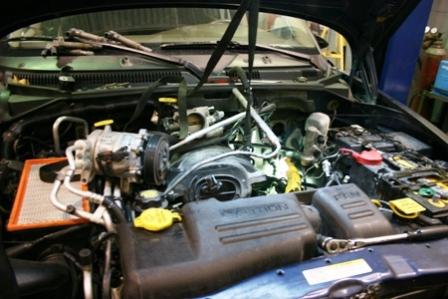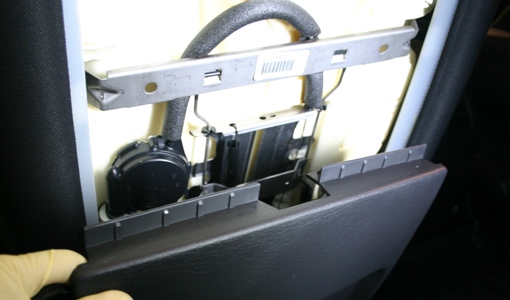December 24, 2009
Consumer, DIY, VW
6 Comments

Summary: A common problem is when both turn signals and hazard lights go out at same time, on a VW New Beetle. The next question – Where is the flasher located? Many cars have separate flashers, one for the turn signals and one for the hazard lights. A good reason for separate flashers is that both are unlikely to fail at the same time and a driver in an emergency situation would be able to turn on some flashing lights to alert other drivers. VW, was unable to grasp this idea so they designed a dual purpose flasher relay – when it fails, the turn signals and hazards will NOT work. The turn signal and hazard flasher relay is integrated into the hazard flasher switch. When the relay fails it will cause both the turn signals and the hazard lights to stop working. The unit is replaced as an assembly, see the picture below.
Read the rest…
December 13, 2009
Auto Specialty Tools, DIY, How To Auto Repair, Tech/Mechanic
2 Comments

Summary: Rear wiper motors on many types of SUV’s and mini vans commonly fail. One reason they fail is due to infrequent use. Electric motors tend to work better when they are used often. Sometimes a rear wiper motor can be tapped lightly to make it work temporarily. This is a quick test (used a lot on Fords) that will help to verify there’s power present at the motor. The wiper motor may stop again before long, but knowing that the motor is getting battery voltage without having to take the trim panel off for testing is a definite plus. The vehicle featured in this car repair article is a Chevy, which doesn’t have the common Ford rear wiper problem. The 1999 S-10 Blazer hatch has been opened and closed many times over the years. This can cause the wiring from the body to the hatch to weaken over time much like breaking a wire hanger by bending it in the same position repeatedly.
Read the rest…
December 6, 2009
Auto Specialty Tools, Chry. 4.7 Problems, DIY, Head Gasket Repl., How To Auto Repair, Jeep, Tech/Mechanic
31 Comments
Summary: Mopar 4.7 engines used in many Jeep and Dodge vehicles share a common problem. Misfires which are accompanied with coolant loss, rear heater not working properly and engine temperatures running a higher than normal range, could have a leaking head gasket. There’s a couple of simple ways to check for a blown head gasket, one is by using a block test kit, another way is to use a cooling system pressure tester and removing the spark plug in the misfiring cylinder.
November 22, 2009
Consumer, DIY, How To Auto Repair
2 Comments
Summary: This automotive repair blog is on a common Chrysler Pacifica seat problem. The drivers lumbar support can fail in one of several ways besides having a bad switch. The motor can fail, the cable can strip or the mechanical flex plate may wear and come apart. The lumbar support mechanism can be changed easily by anyone who is somewhat mechanically inclined. Unlike in some other cars, the seat cover does NOT have to be removed, just the rear access cover taken off for access. This is done in the vehicle making the replacement an easy do-it yourself project.
October 10, 2009
DIY, How To Auto Repair
195 Comments
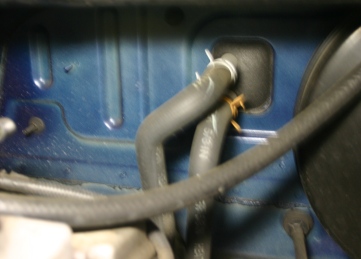
Heater hose clamps like pictured can be removed easily with special hose clamp tools.
Summary: © DenLorsTools.com In this auto service repair article, we cover how car heaters work. Knowing how the automotive heater system is designed to work, allows the car owner or auto tech to diagnose problems more quickly and easily. Car heaters are designed much differently than home heaters, therefore diagnosing and repairing auto heaters requires different service procedures. Auto service tips and information provided in this car repair article is written by a master automotive technician that has many years in the field. The info. is provided in simple language that is easy to understand by anyone – experienced in auto service or not. (Be sure to read the questions and answers in the comment section at the end of the article. Also see page 2 of Car Heater Blows Cold for even more tips.)
Read the rest…
October 9, 2009
Air Conditioning, Consumer, DIY, Tech/Mechanic
223 Comments
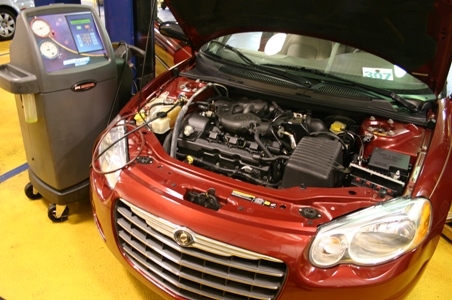
The Robinair AC Machine is one of the most popular units for car air conditioning service.
©DenLorsTools.com Summary: In this auto repair article we discuss the reasons why a car’s air conditioning system may leak water inside the vehicle. Sometimes the fix is simple and other times the repair can be much more labor intensive. As an automotive technician that’s worked over 25 years in Florida, I’ve dealt with this problem many times on different models. If leaks aren’t fixed quickly, the carpet and padding underneath can become a breeding ground for mildew and harmful bacteria. People with certain allergies can be affected the most.
Read the rest…
October 5, 2009
Consumer, DIY, How To Auto Repair, Jeep
28 Comments
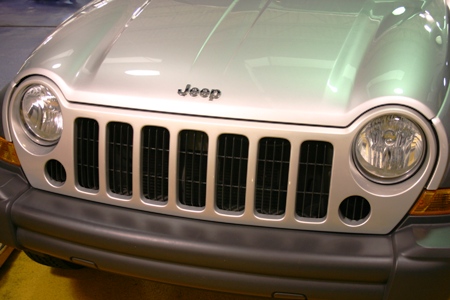 Summary: This auto repair article covers the common problem of “the key being stuck in the ignition.” The shift interlock system is usually the cause of the key being stuck in the ignition lock. We do a general overview of this problem as it is related to a wide range of vehicles and have a specific vehicle, a 2006 Jeep Liberty that has the problem too. As with all vehicle systems, it’s best to have an understanding of how the system works to be able to diagnose the problem properly. Read the rest…
Summary: This auto repair article covers the common problem of “the key being stuck in the ignition.” The shift interlock system is usually the cause of the key being stuck in the ignition lock. We do a general overview of this problem as it is related to a wide range of vehicles and have a specific vehicle, a 2006 Jeep Liberty that has the problem too. As with all vehicle systems, it’s best to have an understanding of how the system works to be able to diagnose the problem properly. Read the rest…
September 27, 2009
DIY, How To Auto Repair, Mistubishi, Timing Belt
174 Comments
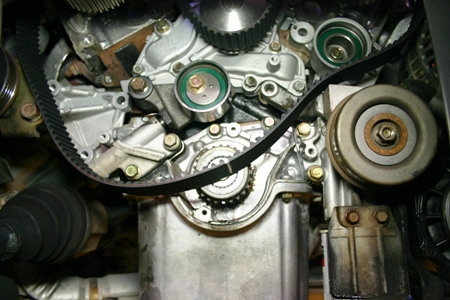
© DenLorsTools.com Summary: In this auto repair blog we cover the basic timing belt R&R procedure on common Mitsubishi 2.5, 3.0, 3.5 and 3.8 V-6 SOHC engines. These interference engines can sustain valve damage if the timing belt breaks. We’ve got suggestions that can help make the job of replacing the timing belt and/or water pump successful. Listed are different Chrysler and Mitsubishi models that use engines with the same basic design when it comes to water pump and timing belt replacement. Also a diagram for timing belt routing and marks for the 3.5 SOHC.
Read the rest…
September 6, 2009
Brake Bleeding, DIY, How To Auto Repair
6 Comments
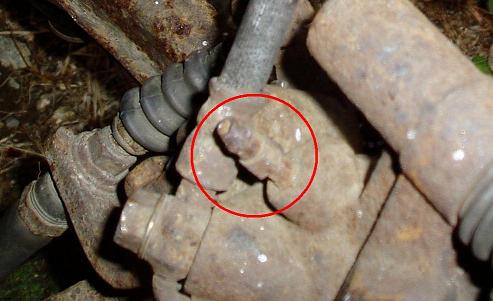
Image courtesy of PansyPatrol
©DenLorsTools.com Summary: In this auto repair blog, we answer readers questions about brake bleeding, one of which is about frozen bleeder screws.
Question: Can you bleed the brakes if ALL the little bleeder valves on each corner are froze? What do I do? Serious Screwed? Thanks ya’ll
It’s no surprise, rusty bleeder screws (and other under carriage parts) like you describe usually get rusted from being exposed to salt. In northern states affected by snowy winter conditions come into contact with salt on roads used for de-icing. In ocean front communities like here in Florida a lot of vehicles are exposed to salt when launching boats and jet skis. I’ve worked on my share of rusty brake lines, calipers, wheel cylinders and suspension parts. Working as a mechanic near Tampa in the 80’s and 90’s I could always tell if a car was from up north. I always said if every vehicle I worked on was rusty from salt exposure I would be looking for a new profession!
Read the rest…
August 30, 2009
DIY, How To Auto Repair, Service Manager
1 Comment
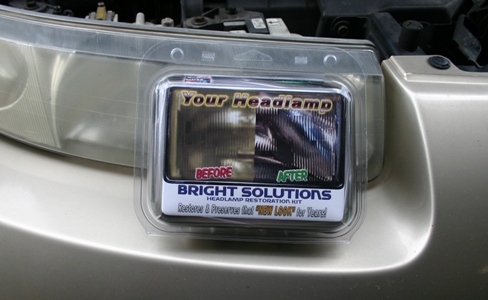
Summary: Headlight restoration kits reviewed for clearing up yellow hazy headlights. Restore head lights to clear condition for safety and better appearance.
We recently had a customer that owns a car wash purchase 100 of Bright Solutions Headlamp Restoration kits. This of course peaked our interest and we had to ask ourselves the question. “Why would a car wash business purchase so many of these kits?” Obviously they were impressed with the performance of the product. Pictures are worth a thousand words, that’s why in this article we’ve decided to let them do most of the talking. Below we show before and after pictures of our test run with this product .Our test subject is a 1997 Saturn with 139,000 miles on it. The headlights are yellow and hazy.
Read the rest…


